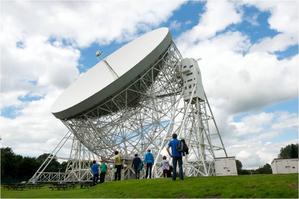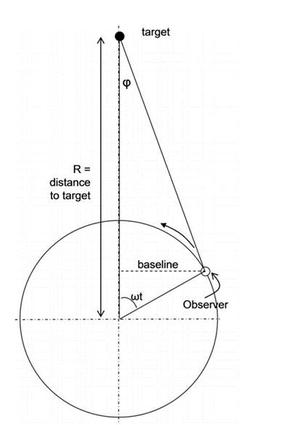Glossary term: Telescopio
Description: Un telescopio è un dispositivo che raccoglie fotoni (di luce visibile o di altre lunghezze d'onda) da oggetti lontani e fornisce informazioni (ad esempio un'immagine) su di essi ad un osservatore. I primi telescopi (dall'inizio del XVII ° secolo) utilizzavano lenti come elementi ottici (vedi telescopio rifrattore). Le lenti hanno una dimensione limitata, quindi per poter vedere gli oggetti più deboli in modo più dettagliato con telescopi più grandi, sono stati utilizzati specchi (vedi telescopio riflettente) per focalizzare la luce. I telescopi ottici più grandi sono telescopi a riflessione. Nel XX° secolo sono stati inventati telescopi per studiare altre regioni della radiazione elettromagnetica, cosicché oggigiorno esistono radiotelescopi, telescopi a infrarossi, telescopi a raggi X, ecc. Poiché le sorgenti celesti sono deboli, gli astronomi tendono a costruire telescopi di grande apertura per raccogliere più luce e raggiungere risoluzioni angolari più fini.
Related Terms:
- Radiazione elettromagnetia
- Telescopio a infrarossi
- Radiotelescopio
- Telescopio a riflessione
- Telescopio rifrattore
- Risoluzione angolare
- Telescopio a raggi X
- Lente
- Specchio
See this term in other languages
Term and definition status: The original definition of this term in English have been approved by a research astronomer and a teacher The translation of this term and its definition is still awaiting approval
The OAE Multilingual Glossary is a project of the IAU Office of Astronomy for Education (OAE) in collaboration with the IAU Office of Astronomy Outreach (OAO). The terms and definitions were chosen, written and reviewed by a collective effort from the OAE, the OAE Centers and Nodes, the OAE National Astronomy Education Coordinators (NAECs) and other volunteers. You can find a full list of credits here. All glossary terms and their definitions are released under a Creative Commons CC BY-4.0 license and should be credited to "IAU OAE".
Related Activities
Big Telescopes: Gravity
astroEDU educational activity (links to astroEDU website) Description: Observing what gravity is doing to the UniverseLicense: CC-BY-4.0 Creative Commons Attribuzione 4.0 Internazionale (CC BY 4.0) icons
Tags: Experiment Age Ranges: 12-14 , 14-16 Education Level: Middle School , Secondary Areas of Learning: Guided-discovery learning , Interactive Lecture , Modelling Costs: High Cost Duration: 1 hour 30 mins Group Size: Group Skills: Analysing and interpreting data , Asking questions , Developing and using models , Planning and carrying out investigationsThe 4-Point Backyard Diurnal Parallax Method
astroEDU educational activity (links to astroEDU website) Description: Measure the distance to an asteroid with a novel techniqueLicense: CC-BY-4.0 Creative Commons Attribuzione 4.0 Internazionale (CC BY 4.0) icons
Tags: Hands-on , Measurement , Distances , CCD imaging , astrometry Age Ranges: 16-19 , 19+ Education Level: Informal , Secondary , University Areas of Learning: Guided-discovery learning , Project-based learning Costs: High Cost Duration: several days Group Size: Group Skills: Analysing and interpreting data , Asking questions , Communicating information , Constructing explanations , Planning and carrying out investigations , Using mathematics and computational thinkingHow do telescopes work?
astroEDU educational activity (links to astroEDU website) Description: Let's discover telescopes and experiment simple opticsLicense: CC-BY-4.0 Creative Commons Attribuzione 4.0 Internazionale (CC BY 4.0) icons
Age Ranges: 10-12 Education Level: Primary Areas of Learning: Guided-discovery learning , Historical focussed activity , Observation based Costs: Medium Cost Duration: 1 hour Group Size: Group Skills: Asking questions










